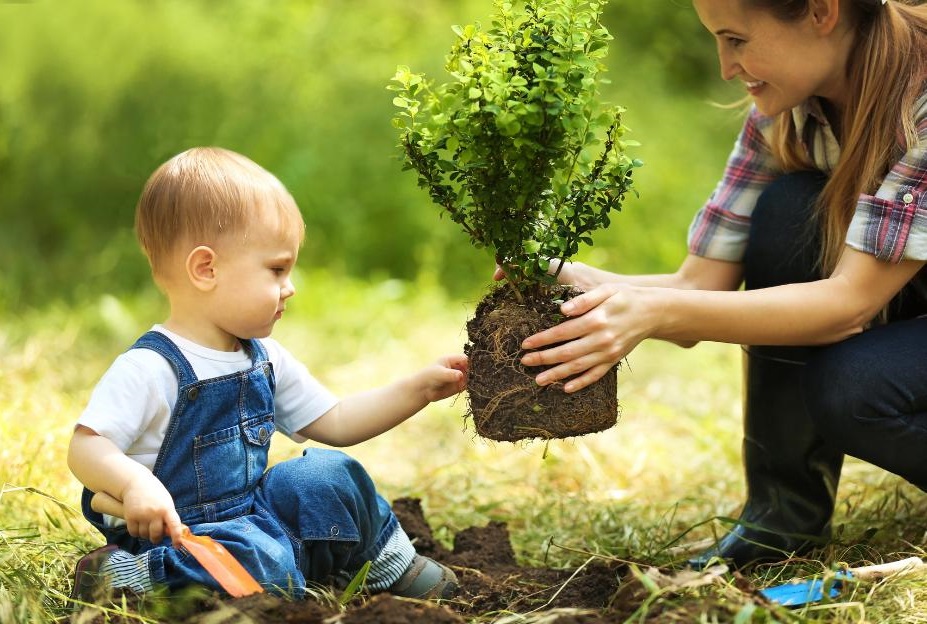As parents and caregivers, we’ve all been there. Your child is throwing themselves on the floor, banging their fists, yelling, and crying. They’re hitting or biting their sibling. They’re throwing their food on the floor.
Challenging behavior and big emotions are just a normal part of development. Yet, even if you know it’s normal and your child needs to have these experiences, it still doesn’t make it any easier in the moment.
When your little one is throwing a full-on tantrum in the middle of the grocery store, you might find yourself pausing and thinking, “W.W.M.D.?” (What would Maria do?)
The answer is: there’s no perfect answer!
Given her view and understanding that each child is unique, Dr. Montessori would have recognized that what works for one child may not necessarily be a helpful strategy for the next. What she likely would have recommended is using our knowledge of our individual child, of ourselves as the parent or caregiver, and of the environment to develop a plan specifically suited for our unique situation.
Assess the Environment
When a child is exhibiting challenging behaviors, it can first be helpful to step back and to assess the environment. Very often, a change in a child’s environment can elicit a change in their behavior.
Here are some ways you can assess the environment and make small adjustments to help manage your child’s challenging behaviors:
- Limit their options – If your little one enjoys dumping things out of baskets or knocking down all of their activities (which is very developmentally appropriate, mind you), take time to limit the number of items available to them. It can cause us a lot of extra work as the adult to clean up messes when the number of toys available to a child abounds; if, however, we limit the number of toys a child has access to at one time, we make cleaning up a much easier task both for the child and for ourselves.
- Provide supplies to encourage cleaning up – In areas where spills are likely to happen such as by a sink or near a weaning table, make cleaning supplies such as a hand towel or a small dustpan and brush accessible to the child. After modeling how to use these tools, children can be encouraged to clean up their own spills and will eliminate the frustration these messes might cause.
- Use visual schedules – The morning and bedtime routine are often chaotic and rushed. Add to that a little one who wants to assert their autonomy and get dressed on their own and our patience is likely to be wearing thin. Use a visual schedule to help children develop independence with these routines. (Hint: You might even find it helpful to have your child pick out their clothes or pack their lunch the night before if you know mornings can be a bit of a time crunch.)
- Create a peace corner – As human beings, we all experience big emotions and this is no different for a child. Creating a space in the environment where your little one can go to help regulate themselves, finding privacy and solitude. For more information on how to create a peace corner, check out our blog.
Assess Yourself
Perhaps the hardest thing for us to do as adults, but sometimes the most vital, is to assess how we may be providing an obstacle to the child’s development. It’s important for us to take a step back and to evaluate how our child’s challenging behavior might be related to our own thoughts, feelings, or actions.
When assessing your own thoughts and behaviors, it might be helpful to consider:
- Are my expectations appropriate for my child’s age and developmental stage?
- How am I feeling and how might this be contributing to my actions, and therefore, to my child’s behavior? Have I had enough sleep? Am I hungry? Is something else bothering me emotionally or causing outside stress that’s creeping in?
- How are my feelings about my child’s behavior impacted by my own childhood experiences?
- Is this behavior really a problem?
It’s important to always remember to give yourself grace, especially in these trying moments and when you’re engaged in this type of deep personal reflection. Being a parent or caregiver is tough work; try not to be judgmental of yourself and instead, just recognize what role you might be playing in what is happening and consider small shifts you might be able to make to help make things easier for you and for your child.
Discover practical, easy-to-implement strategies to gently navigate your child’s emotional outbursts, while maintaining your own sense of calm.
The Child
When a child is engaging in challenging behavior, it is also important to consider what might be going on with the child internally. Sometimes, the reasoning for a child’s behavior might be simpler than we’d imagine!
Some things to consider when thinking about the possible reasons for your child’s challenging behavior include:
- How are the child’s sleep habits? Is it possible they’re tired? (Consider how long it takes the child to fall asleep and if they stay asleep throughout the night as well)
- Is the child hungry?
- Does the child show any symptoms of coming down with a cold?
- Is it possible that there’s some other health related concern that might be causing the behavior?
- Is the child entering a growth spurt or new developmental phase?
- Has there been a change in the child’s routine?
Regardless of where you start, when supporting challenging behaviors in kids, it’s helpful to assess and consider these three critical components of a child’s world. Try to give yourself and your child grace along the way. After all, as parents, caregivers (and as children), we’re all learning and growing every day!





